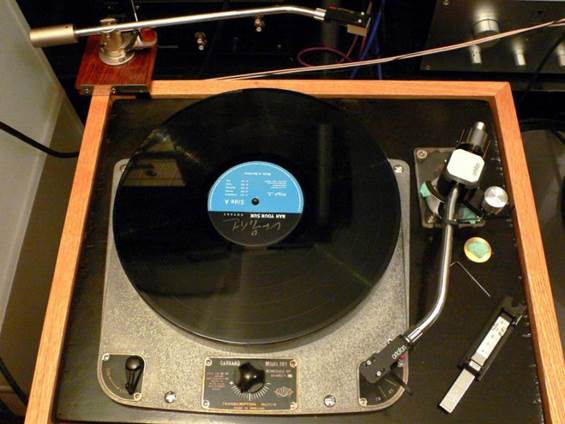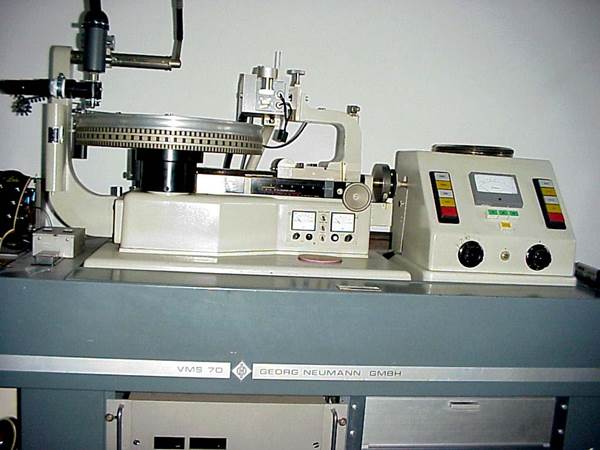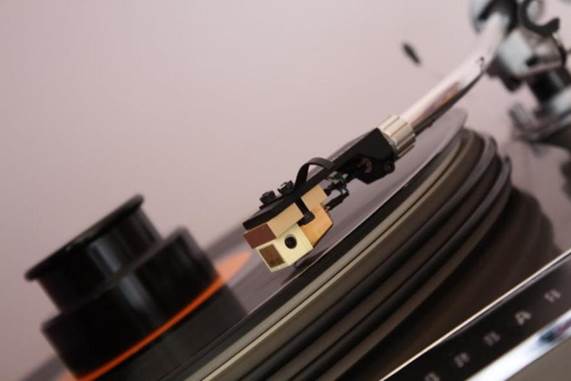Think audiophile vinyl is overpriced? Fed up with paying $53.7
for the latest, umpteenth reprint of Kind of Blue? Then think on this – the
Electric Recording Company’s first Bach Sonata LP re-releases cost $482.3 each,
and it has just put out a Mozart box set for a cool $4,010.7!
Any rational reading of this would lead you to believe that
the driving force behind the company, Pete Hutchison, is one stylus short of
the full cantilever – and Pete himself has used the word “madness” when
describing the brief for his project. But the more you get to know him, the
more you understand how he’s on a mission to make classic music more
affordable. Not something you’d instantly surmise from those price tags, admittedly.
The releases that Electric Recording Company has chosen to
put out aren’t mere reissues of old albums, they’re painstakingly restored
recreations of seminal, ultra-rare performances that have long been the
province of ultra-wealthy collectors. Original imprints of his Bach Sonatas go
for upwards of $8,037.53 on eBay. Pete’s aim is to make his products look,
smell, feel and sound exactly like the originals.
Obscure alternatives
This has been made possible by his amazing attention to
detail, absolute passion for and knowledge of music, plus a vital injection of
cash from his other business – Peace frog, an indie record label that boasts
acts such as José González and Little Dragon. This may be his ‘day job’, but
Pete’s as passionate a vinyl fan as it’s possible to find, and that’s saying
something. “I got into collecting from an early age,” he tells me, “and grew up
just listening to classical music. When my dad died his record collection got
split up between myself and my two brothers. He bought most of the vinyl when
we lived in New York in the sixties. I think what I found with classical, jazz,
whatever, was that I’d buy a repress, but then I’d meet a friend and he’d have
an earlier pressing and I’d notice the difference in sound. From a late fifties
or sixties Blue Note or classical record pressed in the UK, to say a reissue
done in the seventies through transistor equipment, it wouldn’t sound the
same.”

A superbly fettled
Garrard 301/Linn Istook/Denon DL103 is the studio reference turntable
Pete finally got into collecting British classical
pressings, which he found very expensive compared to everything else. “At the
time, with having the pop label, I had a distribution deal with EMI, so I had a
few contacts there, and thought ‘what about if I premastered these using the
original equipment’, get a list together of all my favorite rare classical
albums? Problem is, I didn’t have the original equipment. So I went on a search
for it, I ran around Abbey Road, places like that, and rang people in America and
nobody had it. I finally found some equipment and began restoring it.”
The result is amazing. His studio sports a massive ex-Abbey
Road EMI open reel machine to play the master tapes, and this has been fully
returned to its original condition. There’s an ex-EMI solid-state early
seventies mixing desk that came from Nigeria; Pete believes it was the one used
to record Wings’ Band on the Run. Also present is a Danish-made Lyric tape
console with tube amplification, and a matching vinyl cutting lathe, circa
1965. Again, these have been restored, the cost running into six digits. “These
we believe, are the only machines in the world capable of producing an
all-valve stereo cut”, says Pete, pointing out that the company’s first stereo
release (out now) will be the first all-valve stereo cut in almost half a
century. Finally, there’s a Neumann VMS70 cutting lathe, for that authentic
seventies’ solid-state sound.

Finally, there’s a
Neumann VMS70 cutting lathe, for that authentic seventies’ solid-state sound.
Being something of an obsessive, the quietly spoken Mr.
Hutchison was never going to slap a dog-eared old sleeve in the scanner and pay
a Photoshop pilot to ‘tart it up’. “I looked at how they made record sleeves in
the fifties, and that was using letterpress. Everything would be typed out, and
they’d have these huge metal bores, and each letter is a brass letter and
they’d print it – it was a hugely time-consuming nightmare. So recreating that
was one side of it, then there was getting the card to match! The photographs
were rescanned, but on the Bach disc I tracked down the original photographer’s
son, who still had the stills.”
No compromise
The exercise was a long and frustrating one for Pete, but he
had to get the sleeves right. The result is a record sleeve that looks as good
– and as authentic – as the vinyl inside it sounds.

It all started
when I thought “what about if I premastered these using the original
equipment?”
These re-releases are beautiful things to behold, alright.
But it’s when you play the records themselves that the magic really comes out –
the sound is sublime, with a wonderfully natural, gentle feel that nevertheless
captures the full power of the original performance. And all this without
sounding the slightest bit ‘audiophile’ in their nature! This prompts Pete to
expound on the rights and wrongs of premastering. “I did all this for myself,
to have a mint copy of the original, that wasn’t the original that I’d be happy
with. In quite a selfish way, I wanted to see if it was possible to recreate
something that had the sound, and that was a beautiful artefact, and takes you
back when you listen to it. But the business side of it, that wasn’t taken into
account, and restoring the equipment, that was the expensive thing.”